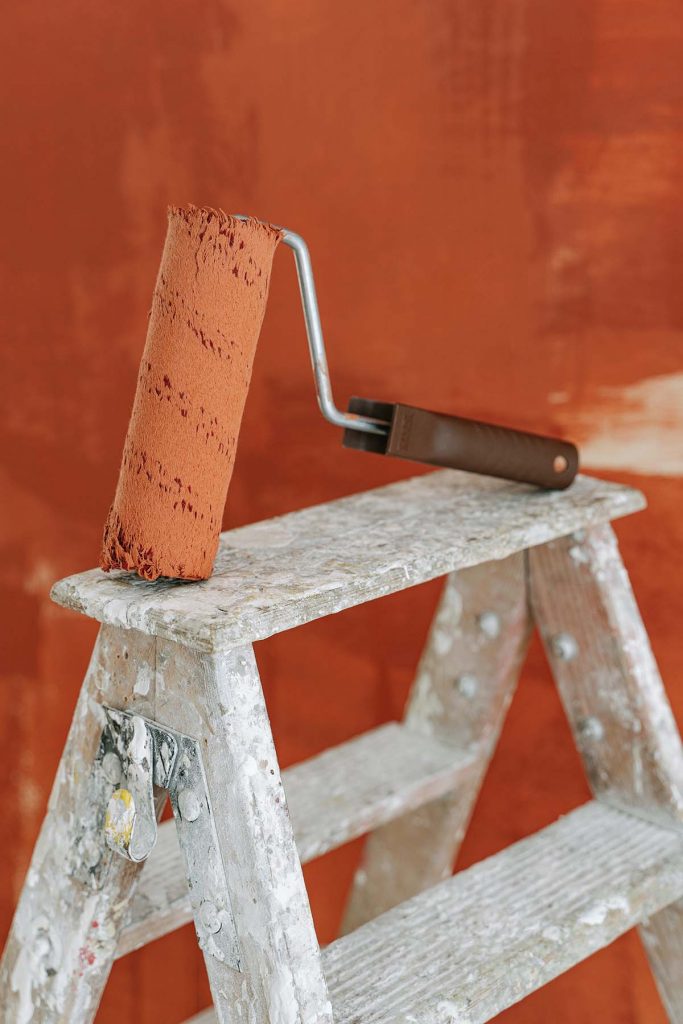Wouldn’t you love to freshen up areas in your home without a worry in the world? Well, you are not alone. But renovation projects aren’t always easy. They require time, money, and a lot of patience. And in some cases, home improvement work can harm your health, and even increase your risk of lung cancer.
November is Lung Cancer Awareness Month, making it the perfect time to bring awareness to this disease and discuss the health risks associated with home improvement projects.
So, when you think of your home, you might have a laundry list of things you’d like to change. But before you begin your renovation, it’s important to consider how each specific project can impact your family’s lung health.
For larger home improvement jobs, there can be some controversy around DIYs versus calling a professional. Enlisting a pro is helpful if you want an expert opinion on the scope of work and the associated safety hazards. Either way, the best way to keep you (and your lungs) safe is to make it a priority to understand the hazards before you start knocking down walls.
Okay, ready to start a safe renovation? Great! In this article, we’re sharing important things to think about when planning your project with lung health in mind. We’ll also discuss potential hazards and tips for handling them in a safe way.
Considerations for Starting Your Home Improvement Project
There are many things as a homeowner that you can do yourself; such as painting your walls, installing new countertops, or installing carpet. To start improving your home, it’s necessary that you are informed that the homeowner holds responsibility for any permits that you may need for certain projects, even if you decide to hire a professional. Certain home improvement projects will modify the structure of your home. Projects that you will need permits for include:
- Building a deck
- Plumbing and electrical
- Upgrading ventilation systems
- New windows
These are a few projects that, with or without a professional, require a permit. Remember, even if you decide to hire a professional, make sure your permits are approved before you begin. Municipal authorities will require you to acquire permits for your home improvement projects and will also cost you money to receive.
Handling Potential Lung Health Hazards
Hazard One: Asbestos
Asbestos is a combination of six naturally occurring minerals that are made up of thin, nanoscopic fibers and can be found in older homes built before the 1980s. It was used as a heat and chemical resistant material in addition to uses for fireproofing and strength. Asbestos in the home is most commonly found in:
- Steam and hot water pipe coating
- Floor coverings
- Insulation
- Electrical equipment
- Roofing
When it comes to asbestos-containing materials, home construction projects are better suited for an asbestos abatement professional. If disturbed, the asbestos fibers can become airborne, risking exposure to those in the home. Once you inhale asbestos, your body is incapable of getting rid of the toxin. This causes the fibers to damage the lungs over time and develop into asbestos lung cancer or mesothelioma cancer. Research shows that about 3 to 4 percent of lung cancer diagnoses are caused by asbestos. A professional will be able to locate and identify asbestos and properly dispose of the material saving you from harm and hassle.
Hazard Two: Renovation Dust
Renovation dust is dust that is generated by home repair, renovation, or demolition work. For example, tearing down drywall can cause airborne dust particles that can irritate the lungs and cause damage. Family members that suffer from chronic respiratory conditions, like asthma or allergies, are especially at risk of lung issues. To protect yourself and your family from dust you should:
- Minimize exposure whenever possible.
- Consider having family stay out of the home until it’s safe to return, if it is an option.
- Wear a mask or respirator.
- Commit to good cleaning practices.
Renovation dust can be a combination of several different toxic materials including talc, gypsum, silica, and calcite. Exposure to these materials can lead to a cough, throat irritation, runny nose, phlegm, and breathing problems. With silica in the mix, it can increase the risk for silicosis and lung cancer, so it’s best not to take renovation dust lightly.
Hazard Three: Radon
Radon is an odorless, tasteless, colorless radioactive gas that is produced from the natural process of decomposition of uranium, found in rocks and soils. The decay of radon happens when the gas escapes the ground and into the air, generating more radioactive particles. Radon exposure is estimated to cause 3 to 14 percent of all lung cancers in a country and is the second leading cause of lung cancer after smoking.
Radon exposure happens most in homes and other buildings depending on the accessibility from the soil into the building. It can enter your home from cracks in the foundation of the floors and walls of your home. When you breathe in radon, the radioactive particles seek out the cells lining your airways and deposit themselves there. This brings in a major risk to your lungs and DNA makeup. To be safe when dealing with radon in your home, you should:
- Contact your state radon office: Calling will give you more information on how to handle radon exposure along with an approved list of contractors.
- Buy a radon home test kit: This way you’re able to figure out how much radon is in the home and to test if the radon has dissipated.
- Air out your home: This is a temporary method but still helps nonetheless. Open your windows and turn on the fans to increase airflow in the home to help reduce the amount of existing radon.
- Evacuate if necessary: Depending on the amount of radon in your home, you may need to evacuate until safe.
When to DIY and When to Call a Professional
It can be such a great feeling to accomplish a project on your own, but not all of us can be Tim Allen in Home Improvement. It’s not worth the risk of your home and your own safety and health. When thinking about home improvement, keep an open mind— not everything will go as planned. Create a plan of what you’re doing, what you will need, and who needs to be involved, and include a budget, but don’t be discouraged if things end up going in a different direction.
Don’t underestimate the project. There will be cases that you are going to need extra assistance and that’s okay. There are many different kinds of professionals in home improvement and certain professionals you need to call for specific projects. Here are other projects that are best to call a professional for:
- Electrical work
- Pipe repair
- Roof repair
- Mold removal
- Lead-based paint removal



